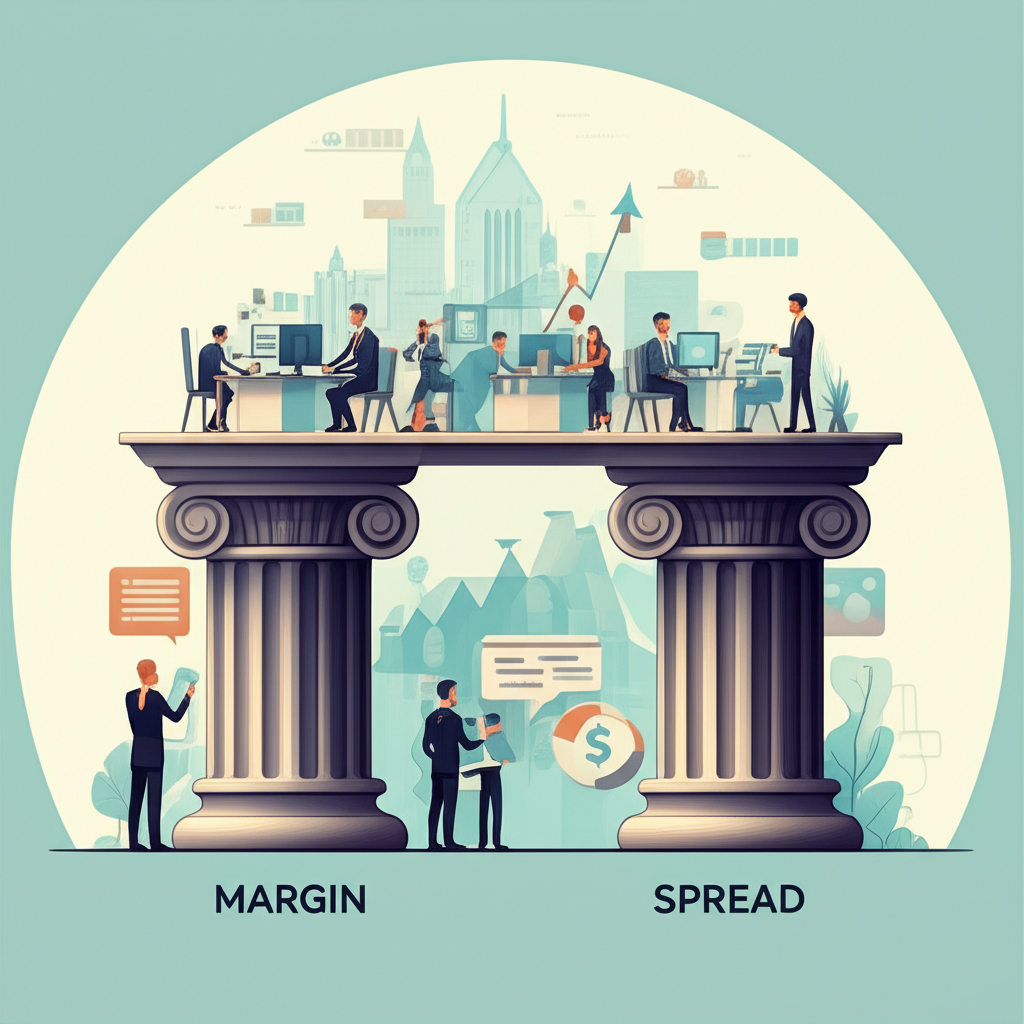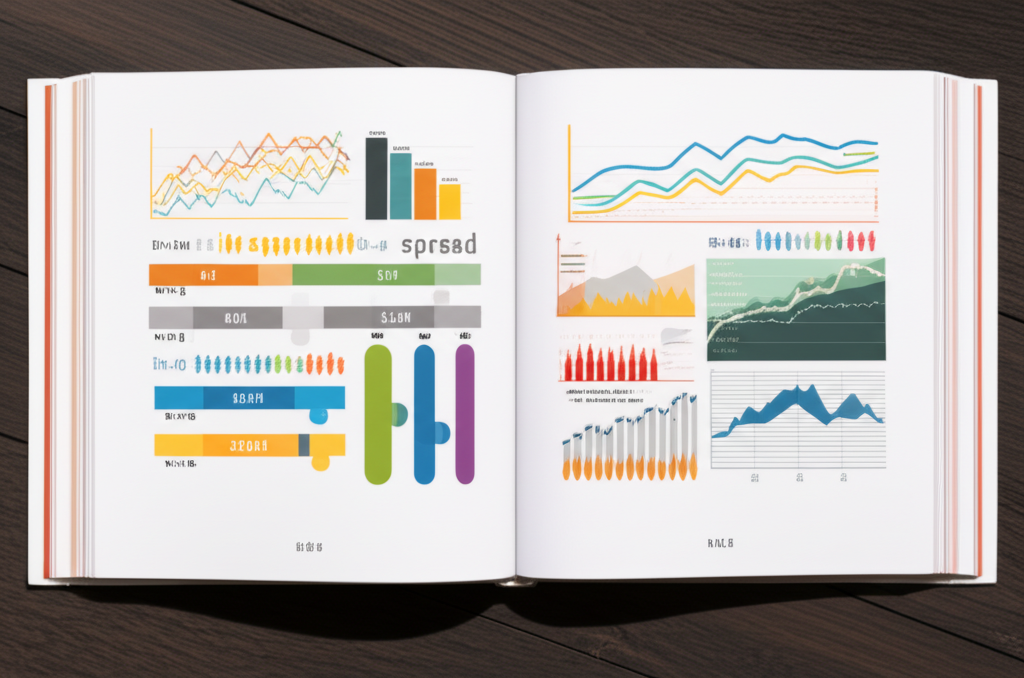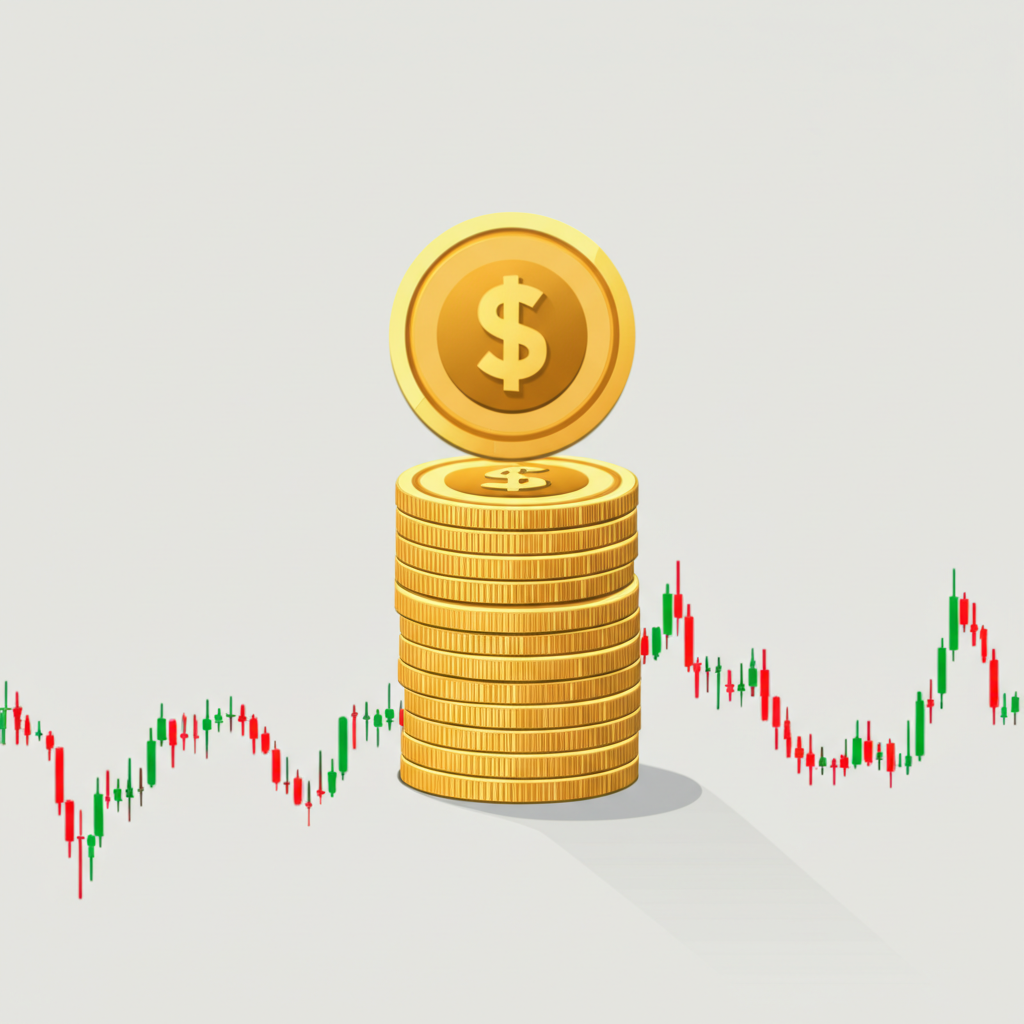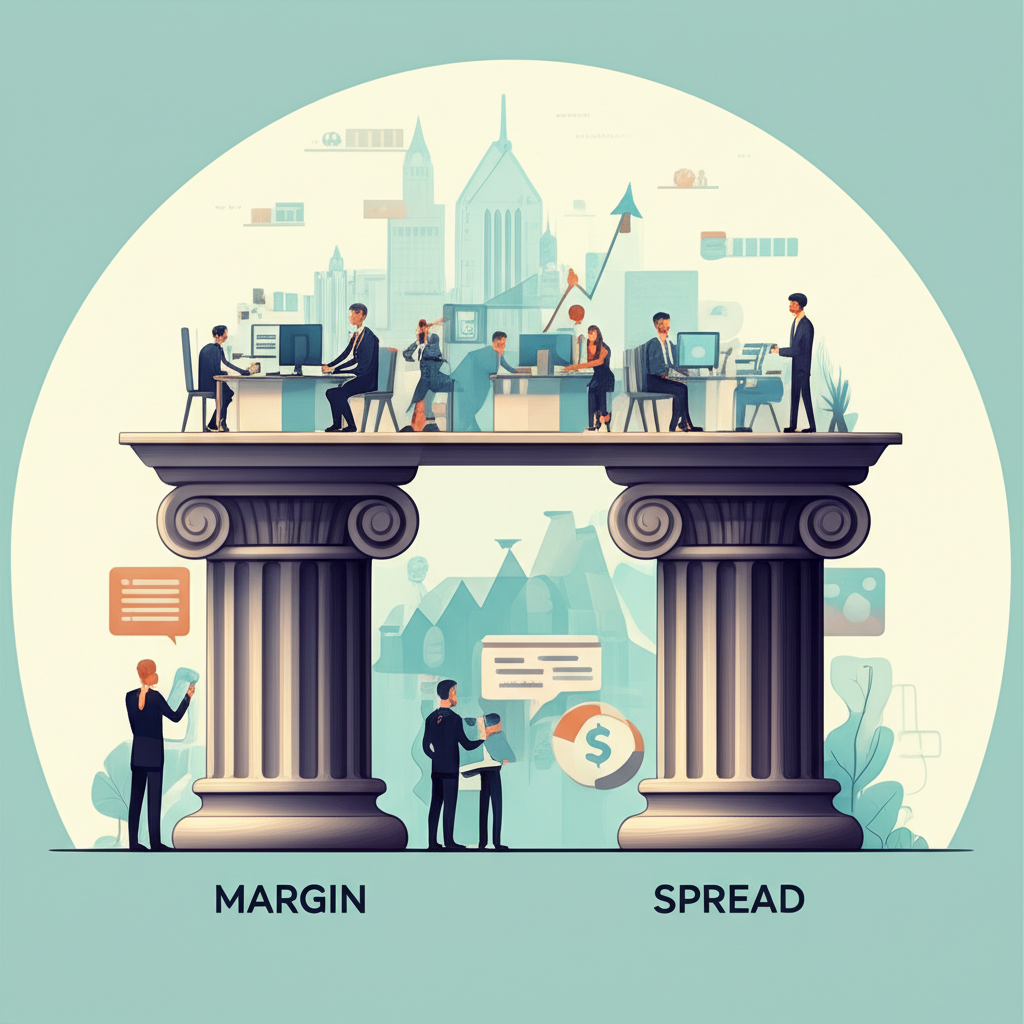Introduction to Margin Spread: The Dual Pillars of Financial Trading

Navigating the financial markets demands more than instinct—it requires a firm grasp of foundational concepts that shape every transaction, decision, and outcome. Among these, two elements stand out for their profound influence: margin and spread. Though often mentioned together, they serve different purposes and operate through distinct mechanisms. One governs the capital needed to enter a trade, while the other represents the immediate cost of doing so. Understanding how margin enables leverage and how spread affects transaction efficiency is essential for anyone serious about trading or investing. These aren’t just technical terms—they’re practical tools that determine risk exposure, profitability, and long-term sustainability in dynamic financial environments.
Whether you’re analyzing a forex pair, evaluating a stock position, or reviewing a loan agreement, both margin and spread come into play. Their interplay influences everything from your entry point to your exit strategy. For traders, miscalculating either can lead to unexpected losses or missed opportunities. For institutions, these metrics underpin lending profits and risk management frameworks. This guide breaks down both concepts in clear, actionable terms—explaining how they work, where they apply, and how to manage them effectively across markets.
What is Margin? Your Capital & Leverage Explained

At its core, margin is the capital you must set aside to open and maintain a leveraged position. Think of it as a security deposit—a commitment of funds that allows you to control a much larger value in the market than your account balance would normally permit. This mechanism, known as leverage, is what makes margin so powerful—and potentially risky. It amplifies both gains and losses, making it a double-edged sword that demands careful handling. Brokers require this collateral to protect themselves against adverse price movements, ensuring that traders have skin in the game.
Defining Trading Margin: Initial, Maintenance, and Variation
Margin isn’t a single figure—it comes in different forms depending on the stage of your trade:
- Initial Margin: The upfront capital required to initiate a leveraged trade. This is typically expressed as a percentage of the total position value. For instance, opening a $100,000 EUR/USD position with a 1% initial margin requirement means you need $1,000 in your account to get started.
- Maintenance Margin: The minimum equity level your account must maintain to keep a position open. If your account value drops below this threshold due to losing trades, your broker may issue a margin call. This is usually lower than the initial margin—say, 0.5% instead of 1%—giving you some buffer before action is required.
- Variation Margin: Common in futures trading, this refers to the daily settlement of profits and losses. At the end of each trading day, accounts are marked-to-market. If your position gained value, the profit is credited; if it lost, the loss is debited. This ensures ongoing alignment between your equity and current market prices.
These distinctions are critical. Confusing maintenance with initial margin, for example, could leave you unprepared when volatility hits. Knowing how each type functions helps you anticipate margin calls and avoid forced liquidation.
How Margin Works: The Power of Leverage

Leverage is the engine behind margin trading. It allows a relatively small amount of capital to control a disproportionately large position. A leverage ratio of 1:50 means every dollar in your account can control $50 worth of an asset. In forex, where movements are often measured in fractions of a percent, this magnification can turn modest price shifts into meaningful gains—or devastating losses.
Imagine a trader wanting to buy one standard lot (€100,000) of EUR/USD. Without leverage, they’d need the full equivalent in USD. But with 1:50 leverage, only €2,000 (or about $2,200 at 1.10 exchange rate) is required as margin. This frees up capital for other trades but increases sensitivity to market swings. A 1% move against the position wipes out 50% of the margin—highlighting why risk management is non-negotiable when using leverage.
Margin Call: Understanding the Risks
A margin call occurs when your account equity falls below the maintenance margin level. At this point, your broker will demand additional funds to restore the required balance. If you fail to respond, they may close your positions automatically, often at unfavorable prices. This forced exit can lock in losses and disrupt your strategy.
Margin calls aren’t warnings—they’re urgent actions triggered by real-time market data. They emphasize the importance of monitoring your margin level, using stop-loss orders, and avoiding overexposure. Even experienced traders can be caught off guard during sharp market reversals, especially when holding multiple leveraged positions.
What is Spread? The Cost of Market Access
While margin determines how much capital you need, spread defines how much it costs to enter and exit a trade. It’s the difference between the price at which you can buy (the ask) and the price at which you can sell (the bid). This gap may seem minor, but it accumulates with every transaction and directly reduces your net returns. Unlike commissions, which are sometimes optional or transparently listed, the spread is an embedded cost you pay simply for participating in the market.
Defining Bid-Ask Spread: The Foundation of Trading Costs
The bid-ask spread is the most visible form of spread in trading. Market makers and brokers profit from this difference by acting as intermediaries between buyers and sellers. When you place a market order to buy, you pay the ask price; when you sell, you receive the bid. The spread is the gap between these two prices.
For example, if EUR/USD is quoted at 1.1050 (bid) / 1.1052 (ask), the spread is 2 pips. Buying at 1.1052 and immediately selling at 1.1050 results in an instant 2-pip loss. This doesn’t mean the trade is unprofitable—but it does mean the market must move at least 2 pips in your favor just to break even. Over time, especially for high-frequency traders, these micro-costs add up significantly.
Types of Spreads Beyond Bid-Ask
Beyond the bid-ask dynamic, the concept of “spread” extends across various financial domains:
Interest Rate Spreads (e.g., bank lending rates vs. deposit rates, bond spreads)
In banking, the interest rate spread is the difference between the rate a financial institution charges on loans and the rate it pays on deposits. This is a primary source of income for banks. For example, if a bank pays 1% interest on savings accounts but charges 6% on personal loans, the 5% difference is its net interest margin. Similarly, in bond markets, the spread between a corporate bond yield and a government bond yield reflects the extra risk investors take on for holding less secure debt.
Credit Spreads (e.g., between bonds of different credit quality)
Credit spreads measure the yield differential between two bonds with similar maturities but different credit ratings. A wider spread indicates higher perceived risk. For instance, a junk bond might offer a 7% yield compared to a 3% yield on a Treasury bond of the same duration, resulting in a 400-basis-point credit spread. This premium compensates investors for the increased likelihood of default. Fidelity’s learning center offers an insightful overview of credit spreads and their importance in fixed income investing.
Futures/Options Spreads (e.g., calendar spreads, butterfly spreads)
In derivatives trading, “spread” also refers to strategies involving multiple contracts. A calendar spread, for example, involves buying and selling options with the same strike price but different expiration dates. A vertical spread uses different strike prices. These strategies allow traders to profit from time decay, volatility changes, or directional moves while limiting downside risk. They’re popular among advanced traders seeking nuanced exposure without outright directional bets.
Factors Influencing Spread Size
Spreads aren’t static—they fluctuate based on several key factors:
- Liquidity: Highly liquid assets like major forex pairs (EUR/USD, USD/JPY) or large-cap stocks typically have tighter spreads because there’s a constant flow of buyers and sellers. Illiquid instruments, such as small-cap stocks or exotic currencies, face wider spreads due to lower trading volume.
- Volatility: During periods of high uncertainty—like economic data releases or geopolitical events—market makers widen spreads to compensate for increased risk. This protects them from rapid price swings that could lead to losses.
- Asset Type: Different markets have inherent spread characteristics. Forex generally has very narrow spreads, while commodities or emerging market CFDs may have much larger ones.
- Time of Day: Spreads often widen during off-peak hours. For forex, liquidity drops significantly outside of major session overlaps (London-New York, for example), leading to less competitive pricing.
- Broker Policies: Some brokers offer fixed spreads regardless of market conditions, which can be beneficial during volatility. Others provide variable spreads that reflect real-time liquidity but may spike during news events. Additionally, ECN brokers pass through raw spreads from liquidity providers and charge a separate commission, often resulting in lower overall costs for active traders.
Margin Spread: How They Intersect and Diverge
Though often discussed together, margin and spread are fundamentally different—one is a capital requirement, the other a transaction cost. Yet they intersect in practice. Both affect your effective trading capital, influence risk exposure, and shape your breakeven point. Ignoring either can undermine even the most well-researched strategy.
The Relationship: Margin and Spread in Trading
In leveraged trading, margin determines how large a position you can take, while spread determines how much it costs to enter and exit that position. You might use $1,000 in margin to control a $100,000 forex trade, but before the market moves a single pip in your favor, you’re already down by the cost of the spread—say, $20 on a 2-pip spread for a standard lot. That means your trade needs to gain at least 2 pips just to reach zero. Only beyond that point does actual profit begin.
Effectively, margin gives you access; spread eats into your returns. A trader using high leverage on a tight-margin instrument must still account for spread costs, especially if trading frequently. Even small spreads become significant when compounded over dozens of trades per week.
Key Differences: Cost vs. Capital Requirement
The distinction is crucial: **spread is a cost**, while **margin is a capital commitment**. When you pay the spread, that money is gone—transferred to the market maker or broker as compensation for facilitating the trade. Margin, however, is not spent. It’s held as collateral and returned to you when the position closes, assuming no losses exceed your equity. If losses do occur, the margin covers them, but the initial deposit itself isn’t a fee like the spread.
This difference affects how you manage your account. You can recover from using margin if the trade turns profitable, but the spread cost is sunk the moment you execute the trade.
Calculating Margin and Spread: Practical Examples
Putting theory into numbers makes the concepts clearer. Here’s how margin and spread calculations work in real-world scenarios.
Calculating Initial and Maintenance Margin (with examples for Forex/CFD)
Scenario: You want to trade 1 standard lot (100,000 units) of EUR/USD at an exchange rate of 1.1000. Your broker offers 1:100 leverage (1% initial margin) and requires 0.5% maintenance margin.
- Trade Value: 100,000 EUR × 1.1000 USD/EUR = $110,000
- Initial Margin Required:
- 1% of $110,000 = $1,100
You must have at least $1,100 in your account to open the trade.
- Maintenance Margin Required:
- 0.5% of $110,000 = $550
If your account equity falls below $550, a margin call will be triggered.
This example shows how a small capital outlay can control a large position—but also how quickly losses can erode your buffer.
Calculating Bid-Ask Spread Cost (with examples)
Scenario: You buy 1 standard lot of EUR/USD at an ask price of 1.1002. The bid price is 1.1000. You later sell at 1.1001.
- Spread in Pips: 1.1002 – 1.1000 = 0.0002 = 2 pips
- Pip Value for Standard Lot: $10 per pip for EUR/USD
- Total Spread Cost: 2 pips × $10 = $20
Even if you close the trade immediately, you lose $20 due to the spread. This is the baseline hurdle any trade must overcome.
Margin Spread Calculator (Conceptual)
An ideal tool for traders would combine both calculations into one interface. Users could input the asset, trade size, leverage, and current bid/ask prices to instantly see: required initial margin, maintenance margin, and total spread cost. While no single “margin spread” formula exists, integrating both metrics helps assess the full cost and risk profile of a trade. Many brokers offer such calculators on their platforms, allowing for pre-trade analysis and better capital planning.
Margin Spread in Different Financial Contexts
The roles of margin and spread shift depending on the market and instrument involved. Here’s how they apply across key financial areas.
Forex and CFD Trading
Forex and CFDs are built on leverage and tight spreads. Major currency pairs often trade with spreads as low as 0.1 to 2 pips, making them attractive for short-term strategies. Margin requirements are typically low—between 0.5% and 5%—enabling high exposure with minimal capital. However, this accessibility increases risk, especially during volatile news events. Traders must balance the benefits of leverage with the reality of spread costs and margin calls.
Stock and Options Trading
In equities, margin allows investors to borrow funds to buy more shares than cash allows. Under Regulation T in the U.S., the initial margin requirement is generally 50%. For example, to buy $10,000 worth of stock, you need $5,000 in cash and can borrow the rest. Bid-ask spreads vary—blue-chip stocks like Apple may have spreads of $0.01, while smaller stocks might have spreads of $0.10 or more. Options trading introduces more complexity, with margin requirements depending on strategy (e.g., covered calls vs. naked puts) and bid-ask spreads affecting entry and exit precision.
Margin Spread in Loans and Lending (Interest Rate Spread)
When applied to lending, “margin spread” usually refers to the **interest rate spread**. This is the gap between what a bank earns on loans and what it pays on deposits. For example, if a bank funds itself at 2% and lends at 7%, it earns a 5% spread. This difference covers operating costs, default risk, and generates profit. Central bank policy rates heavily influence this spread—when rates rise, banks may widen spreads temporarily before competition pushes them back down. The Federal Reserve provides insights into bank net interest margins, which reflect the health and profitability of the banking sector.
Commodities and Futures
Futures markets rely heavily on margin. Traders post a fraction of a contract’s value as initial margin, with daily variation margin adjustments reflecting gains or losses. Spreads here include both the bid-ask differential and strategic positions like calendar spreads in crude oil or gold futures. These strategies allow traders to profit from relative price changes between contracts rather than outright direction. The combination of leverage, daily settlements, and spread-based strategies makes futures a complex but powerful tool for hedgers and speculators alike.
Strategies for Managing Margin and Spread
Successful trading isn’t just about predicting market direction—it’s about managing the mechanics that affect every trade. Margin and spread are two of the most controllable variables.
Optimizing Margin Usage for Risk Management
To avoid margin calls and preserve capital:
- Limit Leverage: Just because your broker offers 1:100 doesn’t mean you should use it. Many professionals use far less, aligning position size with their risk tolerance.
- Use Stop-Loss Orders: These automatically close losing positions before they drain your equity. They’re essential for protecting against sudden reversals.
- Monitor Equity Daily: Keep track of your used and free margin. Know your broker’s margin call policy—some notify at 100%, others at 50% of maintenance level.
- Keep a Buffer: Don’t operate at the edge. Holding extra capital above the minimum reduces stress and increases flexibility during drawdowns.
Minimizing Spread Costs in Trading
To reduce the drag of spread expenses:
- Trade During Peak Hours: For forex, focus on overlaps between London and New York sessions. For stocks, stick to regular market hours.
- Compare Brokers: Some specialize in low spreads for major pairs, while others charge higher spreads but offer better execution quality. Evaluate both.
- Use Limit Orders: Instead of accepting the current ask or bid, set your own price. This avoids paying inflated spreads during volatility.
- Consider ECN/STP Models: These brokers pass through raw liquidity with minimal markup, charging a small commission. For active traders, this model often results in lower total costs.
Analyzing Broker Spreads: OANDA and Beyond
Questions like “Why is OANDA spread so high?” often arise during volatile periods. The answer lies in their pricing model: OANDA uses variable spreads, which widen when market conditions are uncertain. This reflects actual liquidity rather than artificial stability. While some brokers advertise fixed spreads, they may requote or experience slippage instead.
When evaluating OANDA or any broker, consider:
- Pricing Structure: Is it raw spreads + commission, or all-inclusive spreads?
- Average vs. Maximum Spreads: Look at historical data across different times and events.
- Execution Quality: Fast, reliable execution often outweighs slightly wider spreads.
- Regulatory Oversight: Choose brokers regulated by top-tier authorities like the FCA, ASIC, or CFTC for added security.
The best approach? Test multiple brokers with demo accounts, observing real-time spreads and execution during live market conditions.
Conclusion: Mastering Margin Spread for Financial Success
Margin and spread are more than textbook definitions—they’re operational realities that shape every trade and financial decision. Margin unlocks leverage, enabling greater market exposure, but demands disciplined risk control to avoid margin calls. Spread represents the cost of entry, a silent yet constant factor that erodes profitability with every transaction. In banking, the interest rate spread is the lifeblood of lending profits. In trading, understanding both allows you to calculate true breakeven points, optimize position sizing, and select the right brokers and instruments.
Whether you’re a retail trader, an investor, or someone evaluating a loan product, these concepts matter. They reveal the hidden mechanics behind pricing, profitability, and risk. By mastering their interplay, you gain clarity, improve decision-making, and position yourself for long-term success in any financial environment.
Frequently Asked Questions (FAQs)
What is the fundamental difference between margin and spread in trading?
The fundamental difference is that margin is a capital requirement, an amount of money you need to deposit as collateral to open and maintain a leveraged position. It’s not a direct cost but rather a portion of your capital that is temporarily locked up. In contrast, spread is a transaction cost, the difference between the bid and ask price, which is paid to the market maker or broker every time you open and close a trade.
How is margin spread calculated in a typical Forex transaction?
The term “margin spread” isn’t a single calculation but rather refers to the combined impact of margin and spread. For a Forex transaction:
- Margin: Calculated as (Trade Size * Asset Price) / Leverage Ratio. For example, a $100,000 trade with 1:100 leverage requires $1,000 margin.
- Spread: Calculated as (Ask Price – Bid Price) * Pip Value * Trade Size. For example, a 2-pip spread on a standard lot (100,000 units) of EUR/USD costs approximately $20 per round trip.
Both are distinct but crucial components affecting your trade.
Can margin spread apply to loan agreements, and if so, how?
Yes, in the context of loans, “margin spread” typically refers to the interest rate spread. This is the difference between the interest rate a bank charges its borrowers (e.g., for mortgages or personal loans) and the interest rate it pays to its depositors or on its own borrowed funds. This spread is how banks generate their profit from lending activities, covering their operational costs and risk exposure.
Why do spreads vary so much between different brokers and financial instruments?
Spreads vary due to several factors:
- Liquidity: Highly liquid instruments (like major Forex pairs) have tighter spreads than illiquid ones.
- Volatility: High market volatility often leads to wider spreads as market makers price in increased risk.
- Broker Business Model: Some brokers offer fixed spreads, others variable. ECN/STP brokers often have tighter raw spreads but charge a commission.
- Asset Type: Different asset classes inherently have different typical spread widths.
- Time of Day: Spreads can widen during off-peak hours or major news events.
What are the risks associated with high margin and wide spreads in trading?
High margin (meaning high leverage) significantly amplifies both potential gains and losses. The primary risk is a margin call, where a small adverse price movement can lead to substantial losses or even account liquidation. Wide spreads increase your transaction costs, making it harder to break even and profit, especially for short-term or high-frequency trading strategies. They also mean you start each trade further “in the red.”
How does leverage relate to margin requirements, and what is its impact on spread costs?
Leverage is directly tied to margin requirements: a higher leverage ratio means a lower initial margin is required to open a position. For example, 1:200 leverage requires half the margin of 1:100 leverage for the same trade size. Leverage itself does not directly impact spread costs, as spreads are a function of market liquidity and broker pricing. However, using high leverage on a position means that even a small spread cost represents a larger percentage of your actual capital committed to the trade, potentially making it harder to absorb initial losses.
Are there “winning margin spreads” or strategies to minimize spread costs for traders?
There isn’t a “winning margin spread” as margin and spread serve different functions. However, there are strategies to minimize spread costs:
- Trade highly liquid instruments during peak market hours.
- Choose brokers known for competitive spreads or an ECN/STP model with commissions.
- Utilize limit orders instead of market orders to specify your desired entry/exit price.
- Avoid trading during major news events or extremely low liquidity periods when spreads tend to widen.
What is a margin call, and how does it relate to your account’s margin level?
A margin call is a notification from your broker demanding additional funds to be deposited into your trading account. It occurs when the equity in your account falls below the maintenance margin level required to keep your open positions active. This typically happens when market movements go against your leveraged trades, causing significant unrealized losses. Failure to meet a margin call can lead to your broker forcibly closing your positions.
How can I find a reliable margin spread calculator for different assets?
Many reputable Forex and CFD brokers offer margin and spread calculators directly on their websites or within their trading platforms. These tools allow you to input trade size, instrument, and leverage to estimate margin requirements and typical spread costs. Look for calculators that are regularly updated and provide transparent methodology. You might also find independent financial education websites offering similar tools.
Does OANDA’s spread truly differ significantly from other brokers, and what factors contribute to it?
OANDA, like many established brokers, offers variable spreads which fluctuate with market conditions. While their spreads for major pairs are generally competitive, they can appear wider during volatile periods or low liquidity compared to brokers offering fixed spreads or those with different pricing models. Factors contributing to OANDA’s spreads, and any broker’s, include their liquidity providers, market conditions, and their internal risk management policies. It’s always recommended to compare OANDA’s average and peak spreads for your chosen instruments against other brokers’ offerings, considering their overall service and regulatory standing.

留言